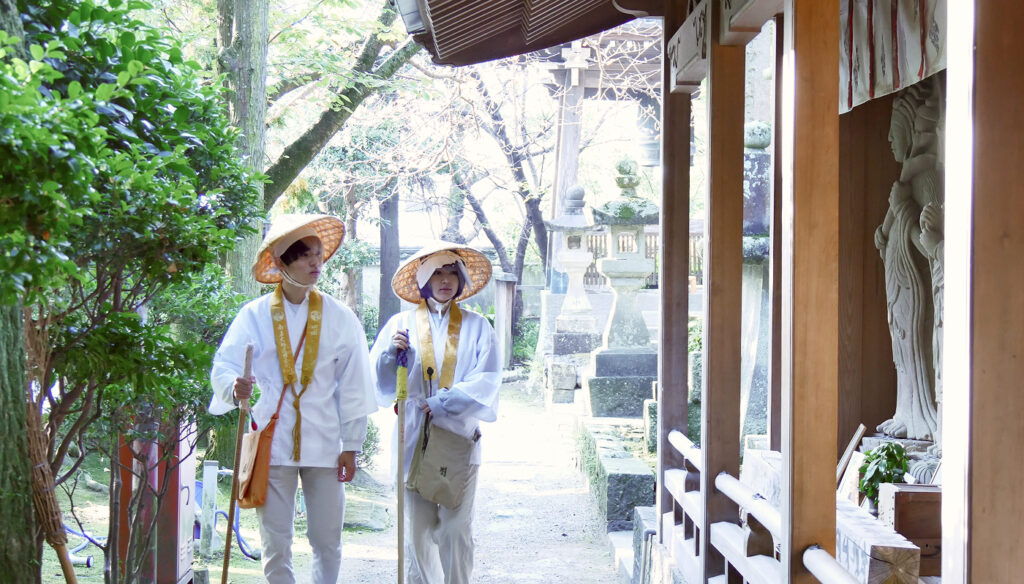
What is Ohenro?
Ohenro is a traditional religious journey that involves visiting 88 sacred sites in the Shikoku region of Japan. This pilgrimage is rooted in the life and teachings of the Japanese monk Kōbō Daishi (also known as Kōbai), and it is undertaken in remembrance of his spiritual practices. Ohenro is not only a journey of faith and prayer, but also a journey of spiritual purification and self-discovery. Many people from both within Japan and abroad participate in this pilgrimage.
Ohenro is more than just a Buddhist pilgrimage; it is a traditional cultural heritage of Japan. Set against the backdrop of Shikoku’s beautiful nature, this pilgrimage offers individuals the opportunity to reflect on their inner selves and connect with others. Even in modern times, it holds great appeal.
This journey, which requires time and distance, is a valuable experience that continues to deeply impress many people. In recent years, the number of overseas pilgrims has surged, and the Ohenro pilgrimage has evolved from being known as “Japan’s pilgrimage” to becoming “the world’s pilgrimage.” We hope many people will come to learn about and take an interest in this wonderful cultural experience.
Origin and History
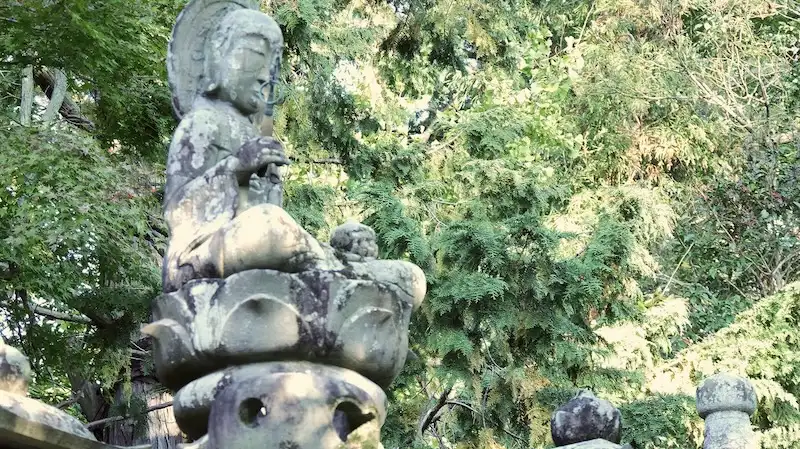
The origins of Ohenro date back to the Heian period (794–1185). Kōbō Daishi was born in 774 in Zentsūji and had a deep devotion to Buddhism from a young age. He traveled to China at a young age, where he studied Shingon Buddhism, a form of Esoteric Buddhism, and upon returning to Japan, he spread these teachings.
Kōbō Daishi’s training in Shikoku is the foundation of Ohenro. He established many temples as a training monk, leaving his footprints in the region of Shikoku, his homeland. To honor his teachings and life, a pilgrimage to the 88 sacred sites across Shikoku began.
There are records from the 12th century that document the existence of this pilgrimage, and by the Edo period (1603–1868), it became popular among the general public.
While it was originally undertaken for religious reasons, nowadays, people increasingly undertake the pilgrimage for spiritual purification, self-reflection, and even as a form of exercise.
Structure and Distance of the Pilgrimage
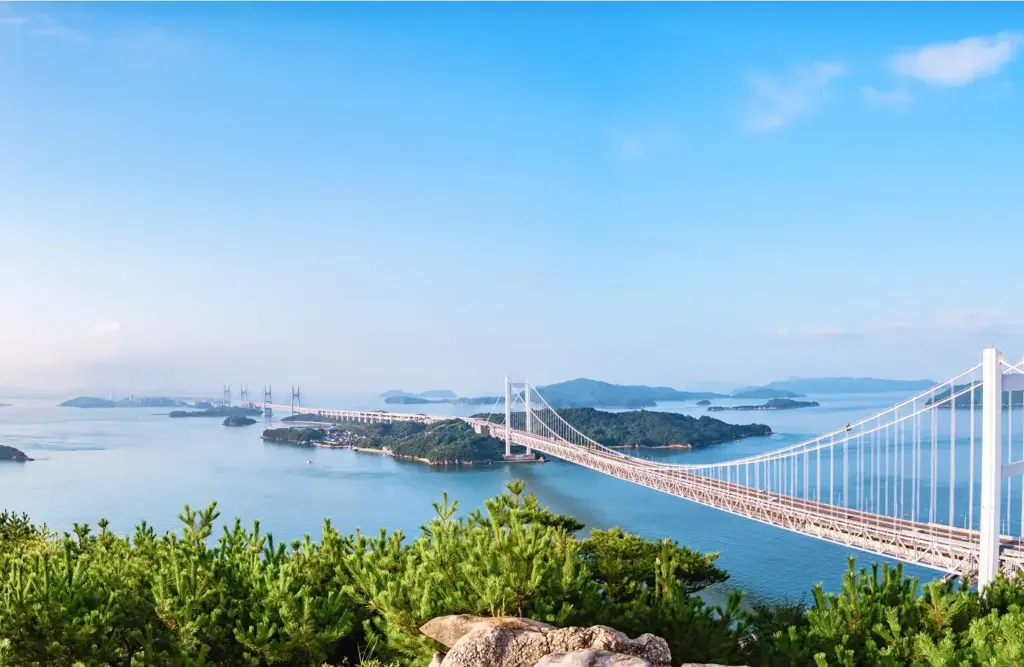
Ohenro is a pilgrimage that spans across the four prefectures of Shikoku (Tokushima, Kagawa, Ehime, and Kochi), covering a total distance of approximately 1,200 kilometers. Pilgrims are required to visit 88 temples scattered across Shikoku, each of which holds unique religious significance.
The order of the temples is fixed, from Temple 1 to Temple 88, but it is not mandatory to follow the sequence strictly. Participants can also follow a reverse route, known as “Gyaku-uchi” (逆打ち), or visit only certain temples, which is called “Kugiri-uchi” (区切り打ち).
Although the pilgrimage is often associated with walking, it can also be done by bicycle, car, motorbike, or even as part of a bus tour.
For those walking the pilgrimage, it typically takes between 30 to 60 days to complete the entire route. Pilgrims who walk are known as “Aruki Henro” (歩き遍路), and this is considered the most traditional and revered method. Walking the pilgrimage requires considerable effort and perseverance, and is said to provide a deep sense of accomplishment and spiritual satisfaction.
Symbols and Equipment of the Pilgrimage
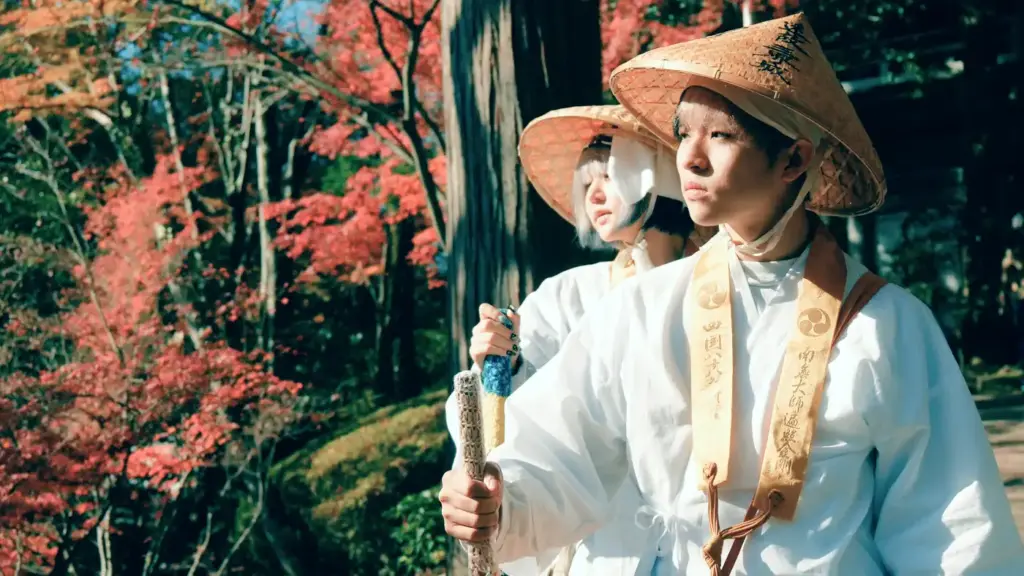
Ohenro involves several symbolic religious items that are deeply connected to faith and rituals. Pilgrims typically wear a white garment known as “Byakue” (白衣) and carry a staff called the “Kongōzue” (金剛杖).
This staff symbolizes Kōbō Daishi, and it signifies that the pilgrim is traveling with him. In addition, pilgrims wear a “Kasa” (笠), a traditional hat, and hold a “Juzu” (数珠), a set of prayer beads, with which they offer prayers.
Pilgrims also carry a “Nōkyōchō” (納経帳), a pilgrimage book, and their goal is to collect “Goshuin” (御朱印), which are the temple stamps and seals as proof of their visit to each temple.
Spiritual and Cultural Appeal
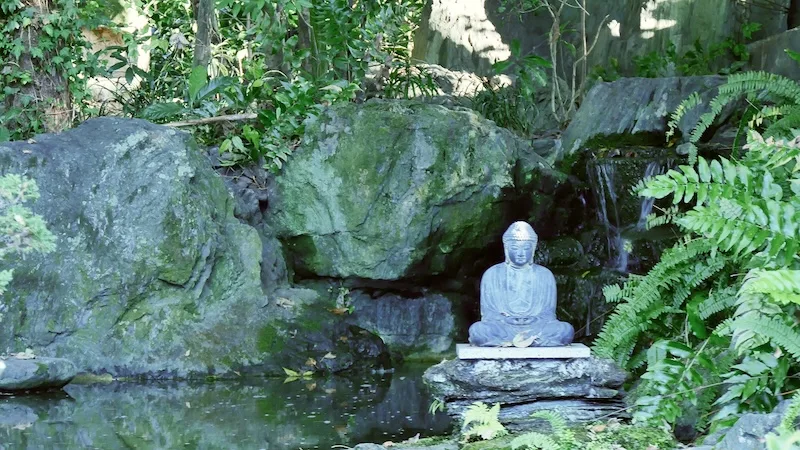
The appeal of Ohenro is not limited to its value as a religious pilgrimage. Participants have the opportunity to experience the rich natural beauty of Shikoku, traveling through mountains, coastlines, rural villages, and more. Additionally, Ohenro is closely tied to the tradition of “Osettai” (お接待), the hospitality culture of Shikoku. Local people offer food, drinks, and rest stops to pilgrims, often providing assistance without charge, which brings warmth and human connection along the pilgrimage route. The spirit of Osettai is a blend of Buddhist teachings on compassion and the local culture of Shikoku, leaving a deep impression on pilgrims. It has also nurtured religious humility and a spirit of service toward others among the people of Shikoku.
Ohenro continues to play an important role in modern times. Many people find it an opportunity to reflect on themselves and seek the meaning of life through this pilgrimage.
Throughout the journey, pilgrims often experience spiritual growth by feeling solitude, overcoming challenges, connecting with nature, and forming bonds with others.
